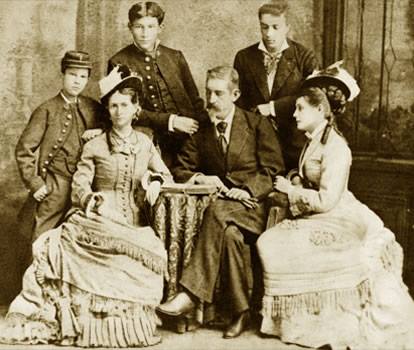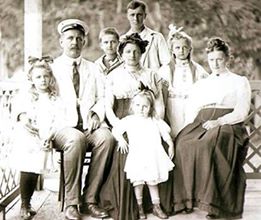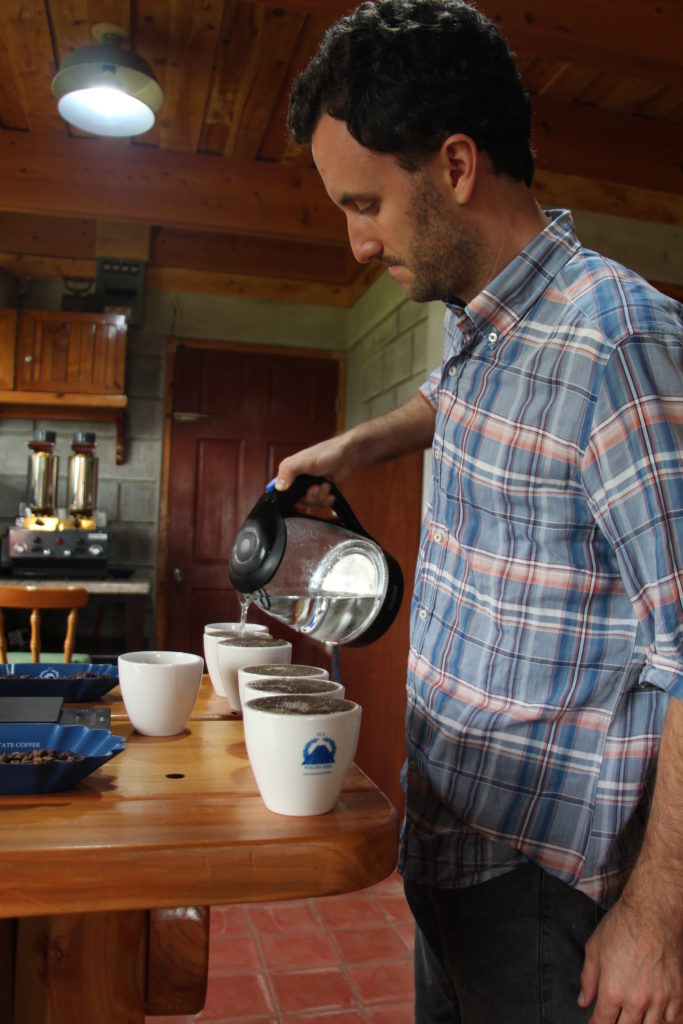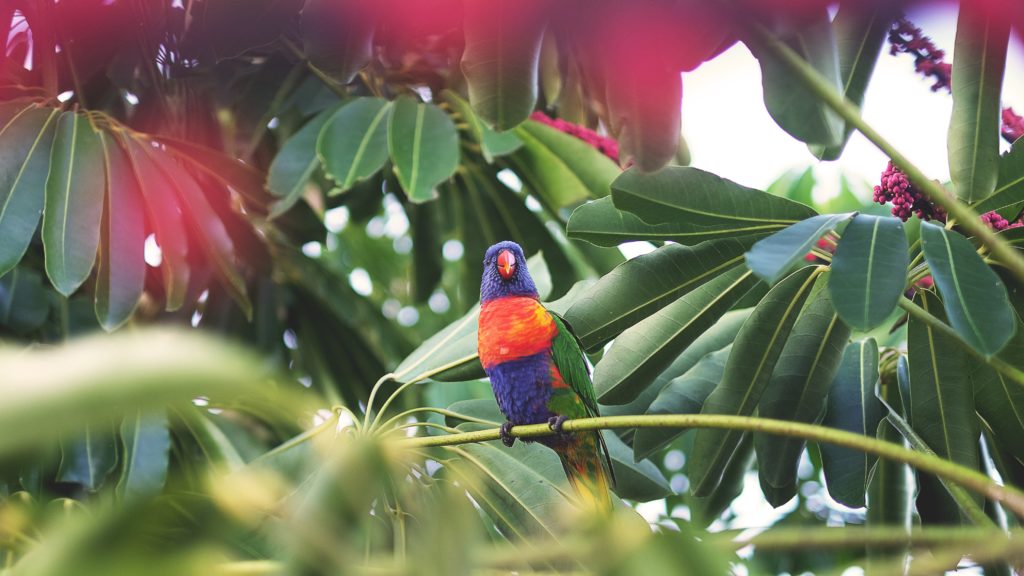A the end of the 19th century when coffee production was in its early beginnings in America, without knowing it, two pioneers and entrepreneurs, Alejo C. Jiménez and Wilhelm Kahle, shared the same dream: “To produce the best coffee in the world” to satisfy the new European gourmet market. This is how Volcán Azul micro-mill started.


Family Business
A family with such a strong coffee producing tradition could only start with hard work and a passion for quality. Volcán Azul didn’t start where it is located now, it actually started at the Uruca, very close to downtown of San José, with Alejo Jiménez. Jiménez would sell the coffee himself in England and this could take up to six months since the journey took two months from Costa Rica to Europe and then two more months back. Wilhelm Kahle was the other pioneer who started in the south of Mexico around the 1880’s; this family moved out from Germany escaping from the harsh living conditions in their country. Unfortunately during World War II, because they were a German family, they lost their fincas. But luckily enough, they were able to buy them again soon after the war ended but then during the 1960’s problems with the Zapatist movement started, so the family decided to move to Costa Rica. Aside from the fact that both families were in the coffee business, they shared something else: they were used to do all the process themselves, harvest, milling, exporting and selling the coffee; which by that time was not a common practice. These two families became one when joined in marriage and kept on working to pursue their dream of producing the best coffee in the world.
Alejo C. proudly shares this story and says he’s pretty sure coffee is what runs through his veins. This is the reason behind so much passion at Volcán Azul, the love and respect that they have for their ancestors and their hard work; all they want to do is honor them. Alejo has helped ever since he ended high school and wants to pass this tradition on to his nephews.

Everyday Work
Now the 4th and 5th generation of this family are in charge of what started over 150 years ago but they also have a very clear goal in mind: the conservation of natural resources. They have committed to protecting vast extensions of tropical rainforest in the Costa Rica since the 80’s, which is why they have acquired over 1500 acres of rainforest for ecological preservation in order to contribute reducing the effects of global warming. Costa Rica is known for it’s efforts to preserve as best as possible our land but Volcán Azul went a lot further by buying this land just to protect it. This reserves are located near the fincas but also at Osa Peninsula, a region of high importance to the world, since it is home to 2.5% of the world’s biodiversity.
Producing over 40 different varietals that include Caturra, Geisha, Villasarchi, Sarchimor, Venecia, it all starts with the utmost careful monitoring of the crops until they reach the desired level of ripeness to deliver the desired quality. After the cherry picking, is now time to start with the milling process. Even though at Volcán Azul they do different milling process such as honey and naturals, washed continues to be their process of choice for several reasons. When processing honeys, it adds a significant work load compared to the washed ones; they constantly need to stop and clean the depulper since honey gets stuck. Also the drying phase also will take longer, specially with the naturals. Time is gold during peak season and with 2000 fanegas to process, wet process is the most affordable to maintain the quality.
Before getting into Volcán Azul’s details it´s important to know that the wet process can be divided into two: fermentation and mechanically washed. Fermentation is a controlled process where the beans are put into fermentation tanks between 12 to 24 hours to remove the mucilage. Producers are now experimenting with different fermentation times and also with enzymes and bacteria to create different flavor profiles. Coffee can also be washed using mechanical mucilage removers which will scrub the mucilage, and even though this involves the use of water, the consumption will considerably drop. The first step includes coffee cherries being dropped in a hopper at the top of a mill, where low density cherries, which are unripe and will float, are removed. Then the high density beans are de-pulped and anything that floats or doesn’t meet the top quality standards will be removed as well. After this process has ended, coffee now needs to be dried; the producer will choose which method suits best. Some of the different drying methods include patios, where coffee is laid down in the floor; African beds, which are raised beds that allow the air to circulate easily. The African beds can also be found in green houses where temperature and humidity are controlled or just under the sun. Every producer has their own secrets.
What are Volcán Azul’s millings secrets to quality coffee? They have a very strict quality control and only the microlots with a cupping score over 85 points can make it to a Volcán Azul bag. Alejo, our tour guide for the day and part of the family, explained that most of their coffee is mechanically washed coffee and the technology of the mill enables them to use only 1 m3 of water per day. For their drying process the coffee is put in patios for two or three days which they call the pre-drying phase. Volcán Azul combines two different drying processes using a mechanical dryer to give coffee the final touch. This is a slow process but they don’t want to leave it to the climatic conditions to determine when the coffee will be ready, mainly during peak of season when space becomes scarce. This mill also offers another process they call double washed which means that after coffee has been mechanically washed, they leave it in fermentation tanks for ten to twelve hours, but this is only done on demand due to the water consumption.
Due to Volcán Azul’s high quality most of their lots are sold in advance to the North European market and that’s why aside from the washed coffees they also offer small batches of honey and natural processed coffee. Within their finca there are particular micro-climates where the plantations are located, partly due to the large extensions of rainforest they preserve, which contribute to making coffee grains unique. In Costa Rica, every coffee mill must comply with multiple laws on water use, hydrocarbon production and wildlife protection. Even though Costa Rica has traditionally leaned to washed processed coffees, the regulations and the general focus on conservation has pushed the producers to innovate different processes such as the honeys in order to reduce water usage, but the market still prefers the coffees with the less mucilage, meaning washed, white or yellow honey.

What can we expect in the cup?
There are some common characteristics that we can find in a washed processed cup of coffee, some of them include cleanness, acidity and more complexity. All of this will depend on the origin and varietal of the coffee, but in general washed coffees will have more flavors inherited by the seed. These characteristics are defined by the comparison with the other processes; honey processed coffees are said to be sweeter, have more body but less clarity than the washed process, whilst the natural process will have fruitier notes than the other two. Many of those who enjoy a good cup of fermented washed coffee, oppose to the mechanical demucilaging, claim that since it does not completely remove the fruit flesh, it will create a standardized and much simpler cup profile.
Volcán Azul’s coffee main characteristics of it’s washed process are sweetness and delicate citrus acidity that, depending on the varietal can also add floral notes such like in geisha and some Ethiopian varietals, that Volcán Azul are developing. We were lucky enough to cup alongside Alejo one of his coffees that was extremely balanced: honey like aroma, fruity sweetness with a crisp mandarin acidity and a very pleasant after taste. Luckily nowadays there are plenty of options to select the coffee that best suits your palate, but one thing that Costa Rica will continue to work for is the conservation and preservation of it’s natural beauty and the quality of it’s coffee.









NO COMMENT